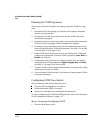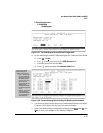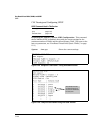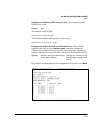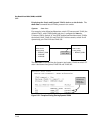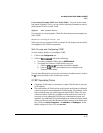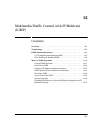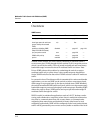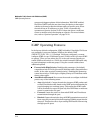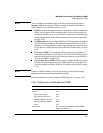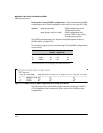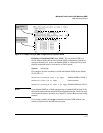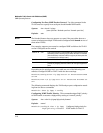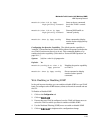
Multimedia Traffic Control with IP Multicast (IGMP)
Overview
Overview
IGMP Features
Feature Default Menu CLI Web
view igmp configuration n/a — page 12-6 —
show igmp status for multicast
n/a — Yes —
groups used by the selected
VLAN
enabling or disabling IGMP
(Requires VLAN ID Context)
disabled — page 12-7 page 12-9
per-port packet control auto — page 12-8 —
IGMP traffic priority normal — page 12-8 —
querier enabled — page 12-9 —
Without IGMP enabled, the switch simply floods all IP multicast traffic it
receives on a given VLAN through all ports on that VLAN (except the port on
which it received the traffic). This can result in significant and unnecessary
bandwidth usage in networks where IP multicast traffic is a factor. Data-
Driven IGMP reduces this problem by authorizing the switch to restrict
multicast traffic only to ports where a given multicast group should flow.
Series 5300XL switches use data-driven IGMP to better control IP multicast
traffic.
In a network where IP multicast traffic is transmitted for various multimedia
applications, you can use IGMP on the switch to reduce unnecessary band-
width usage on a per-port basis. In the factory default state (IGMP disabled),
the switch forwards all IGMP traffic to all ports, which can cause unnecessary
bandwidth usage on ports not belonging to multicast groups. Enabling IGMP
allows the ports to detect IGMP queries and report packets and manage IP
multicast traffic through the switch.
IGMP is useful in multimedia applications such as LAN TV, desktop confer-
encing, and collaborative computing, where there is multipoint communica-
tion; that is, communication from one to many hosts, or communication
originating from many hosts and destined for many other hosts. In such
multipoint applications, IGMP will be configured on the hosts, and multicast
traffic will be generated by one or more servers (inside or outside of the local
12-2



